This week we're exploring the future of nuclear energy, including meeting the makers of a new design of nuclear reactor that can consume the fuels that other plants can't burn. We also delve into ways to unclog pipes inside reactors without the risks of going inside. And where do you stand on the nuclear debate? Should we be exploring alternatives, or is there no alternative to a nuclear-future? We talk to two parties on opposite sides of the debate. Plus, what the Messenger probe has found on Mercury, a blood test to predict an imminent heart attack, flushing out evidence of drug use from sewer water, and a way to block baldness in men...
In this episode
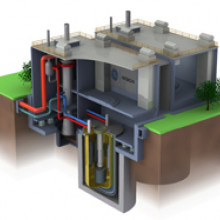
01:20 - Designing the PRISM Reactor
Designing the PRISM Reactor
with Dr. Eric Lowen, GE Hitachi
Ben - Nuclear power has been firmly in the news this month as we mark the anniversary of the Fukushima power plant failure - the result of an earthquake and a tsunami that hit Japan on the 11th of March 2011. The Fukushima plant was commissioned back in February 1971 and reactor technology has developed considerably in those 40 years with new designs being safer and more efficient. Even now, new breeds of reactor are capable of closing the nuclear cycle by generating electricity at the same time as dealing with the problem of radioactive waste. One of these is PRISM that stands for Power Reactor Innovative Small Module and that's been developed by GE Hitachi and we are joined by their Chief Engineer, Dr. Eric Lowen. Eric, thank you ever so much for joining us. I wonder if you could start off by explaining, what's the push to need this technology?
Eric - I would say the push is that as humans grapple with different energy sources going forward, the PRISM technology represents a different fuel source that has vast potential to generate a lot of carbon free energy.
Ben - So, what is the PRISM reactor itself and how does it differ from a traditional nuclear reactor?
Eric - A PRISM reactor is not too different from a conventional reactor that it  still does the basic physioprocess of breaking big atoms in half to extract energy. The PRISM technology came from work that General Electric started in 1981 and then the US government funded an advanced liquid metal reactor programme. So at this point, the technologies really had three decade's worth of development that we feel is ready to be commercialised in different market segments.
still does the basic physioprocess of breaking big atoms in half to extract energy. The PRISM technology came from work that General Electric started in 1981 and then the US government funded an advanced liquid metal reactor programme. So at this point, the technologies really had three decade's worth of development that we feel is ready to be commercialised in different market segments.
Ben - So, how does it actually work? So we need a radioactive source, but it seems that the PRISM reactor can use a far wider range of sources than the reactors that we're used to seeing. How does it take that reaction and turn it into useful energy?
Eric - What's unique about the PRISM reactor is that when a large atom such as uranium 235 or plutonium breaks in half, or fissions, it gives off neutrons that are very high energy and in our current commercial reactors with water cooling, those neutrons slow down or they lose their energy very rapidly and that limits the amount of reactions you can do.
So in the PRISM reactor, we use sodium as a coolant that keeps the neutron energy still high, or relatively fast, and that allows us to use different fuel to fuel this and that's where the potential of this energy comes from.
Ben - So why would sodium allow things to remain faster than using water as a coolant? What's the advantage?
Eric - Well as we know, water is made up of 3 atoms - oxygen and then 2 hydrogen atoms - and hydrogen atoms have one proton in the centre and they're about the same mass as a neutron. So, when we have a fission reaction that occurs with water cooling, that neutron comes and strikes the proton and the water slows down. It gives off its energy because they're about the same mass. So it would be similar to playing billiards where the cue ball, the white ball, hits the 8 ball and transfers its energy. With sodium, because it's a bigger atom, it has 24 protons and neutrons in the centre. When that neutron hits it, it typically bounces off and keeps its energy.
So an analogy that I like to use, if we look at the Earth's orbit, it takes us 365 days to get around the sun. The fast neutrons in the PRISM reactor would go around the sun, if it followed that orbit, in 73 hours. If we look at the slower neutrons in a water cooled reactor, it would take 8.3 years. So it's a big difference in energy that we have and that's why we can use different fuels.
Ben - So you're getting these sort of almost elastic collisions and that means you keep hold of a lot more energy. Does that also mean that if there's a problem, it takes you a lot longer to get rid of the energy to cool everything down?
Eric - Actually, it's kind of the reverse when the PRISM reactor uses metallic fuel, it's in metallic cladding and a metallic coolant called sodium, in a metal vessel called the reactor pressure vessel. That allows us to have air come on the outside, to remove the heat. The unique thing with any nuclear power plant is that once we turn it off, it still generates heat from the radioactive decay and typically, that's about 7% when it initially gets turned off. So the PRISM reactor has the ability to remove that heat very easily with air coming on the outside of the reactor vessel and it can do that not for hours or days, or weeks, but forever. So that's the unique part of the design that we've come up with.
Ben - We saw in Fukushima that there was a problem with the coolant and they were able to bring in seawater. Now, the seawater obviously ended up contaminated. It wasn't an ideal situation, lots of steam, and in fact, it was the very hot steam that led to some of the explosions that people early on thought were a meltdown. Presumably, with the sodium, it will just continue to convect and continue to pass that heat out into the air and will get lots of hot air, but nothing explosive, nothing building up pressure. So actually, this will be a lot safer.
Eric - Yes. So if we look at what happened to Fukushima, they were in an ![Fukushima I Nuclear Power Plant. Tight crop showing reactors 4, 3, 2 and 1, reading left (South) to right (North). Area shown is approximately 600 by 350 metres. Made based on [http://w3land.mlit.go.jp/WebGIS/ National Land Image Information (Color Aerial Photographs)], Ministry of Land, Infrastructure, Transport and Tourism. Fukushima I Nuclear Power Plant](/sites/default/files/media/Fukushima_I_NPP_1975_reactors_1_to_4_crop.jpg) event which we call beyond a station blackout. They lost all of their offsite alternating current, all their onsite alternating current, and all their batteries. And so, they had to grapple with those operators to remove that heat, initially at 7% when they turn it off.
event which we call beyond a station blackout. They lost all of their offsite alternating current, all their onsite alternating current, and all their batteries. And so, they had to grapple with those operators to remove that heat, initially at 7% when they turn it off.
So the way that PRISM is designed is that when it turns off, the way to remove the heat is we pipe in air right beside the reactor vessel. We have a different design and that allows us to continuously remove that heat so we don't build it up.
Ben - And what fuels can a PRISM reactor actually use? What can you take advantage of?
Eric - One of the fuels we can take advantage of is the plutonium that has been separated in the United Kingdom during your reprocessing and that has a great potential to produce a lot of electricity.
With the work that I've done in the United States, we looked at using this technology to extract fuel out of our used nuclear fuel. So that's another possibility. And then if you mix some of our fuel with thorium, you could extract energy that way. So there's a lot of variants that you can use with PRISM as far as extracting energy from big atoms, is what we call it, to produce green electricity.
Ben - And what then happens to the fuel in there? Obviously, with traditional plants, you're left with quite radioactive, unpleasant stuff that we have a bit of a problem and a bit of an argument as to how we get rid of it. What's left at the end of the life of a PRISM reactor?
Eric - In the PRISM reactor that we have been talking to the US government about, we take the fuel that comes out of the reactor and we do separations using electricity. Not acids but electricity, and when we do that separations, we take out what is called fission products. Those are the small atoms that when we break big atoms in half like caesium, krypton, rubidium - superman type materials. And we put the elements that normally occur in nature as a mineral, we put that into a very robust ceramic. And then the other one that are normally as metals, we put that into a metal alloy. And those two waste products, this rock or ceramic and this piece of metal, are then, after about 300 years are less radioactive than the uranium ore.
Ben - So clearly, it's a cleaner way of doing this as well and we're going to have fewer dangerous products at the end of it. What sort of power can we get out of these PRISM reactors? Are they again, equivalent to the reactors that we're currently seeing in the surface?
Eric - They're a little bit smaller. So what we have proposed for the United Kingdom, for the disposition of plutonium at the Sellafield site would be one PRISM power block and its total electricity output is about 600 megawatts electric. And that 600-megawatt electric over its lifetime could disposition that plutonium that's currently stored at the Sellafield site.
Ben - So not only are you going to generate 600 megawatts of electricity, but you're also going to get rid of or use up, or at least make use of a stockpile of plutonium that we currently have, just taking up space and being a problem?
Eric - Yes, we would turn that into an energy asset. We don't look at that plutonium as a waste and your country has done a very good job of safely storing that plutonium for this future use. The current policy as I understand in the UK is that they don't want to reprocess or recycle, like I described, so they just want to push it through a reactor system such PRISM, extract some energy and then place that in a geological repository.
Now if we took the full vision of the full capabilities of this technology, that 100 tonnes of plutonium could generate between 200 and 500-gigawatts electricity. So there's a great energy potential there, should it be chosen to be used.
Ben - Well thank you very much. That's was Dr. Eric Lowen. He's a Chief Engineer at GE Hitachi.
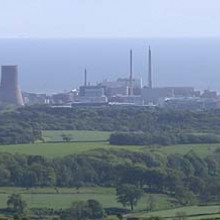
10:57 - Keeping Reactors Running
Keeping Reactors Running
with Jonathan Morrison, University of Birmingham
Ben - Once a nuclear power plant is commissioned, it's important to keep it running well and efficiently, and keeping the water flowing is just as important as maintaining the radioactive fuel.
Heat exchanges are necessary to take the heat from the nuclear reaction and put it into water to make steam which will then turn a turbine and generate your electricity. So heat exchanges rely on having hot water on one location and piping it through very small pipes which have a large surface area over which the heat can pass into the cooler water. Now that in itself creates a novel set of problems, that scientists such as Birmingham University's Jonathan Morrison are trying to solve.
Jonathan - Well the nut that we're trying to crack is the problem that's been seen in the nuclear industry for many, many years which is deposition of corroded material of very small restrictions in the systems. So, as you go from a large flow, as you would, having a flow directly from the core of the nuclear reactor and into the steam generator, you go from a very large flow into very small tubes and you often see deposition at these very small tubes in the most inconvenient spot which is right at the entrance of them as the waters entering the small flow regime.
Ben - How big a problem really is it? Does it cause a reactor to stop functioning properly?
Jonathan - Not so much stop functioning. It's more of a money issue. The worse it gets, the more often you have to shut the reactor off and clean it because obviously, you want to improve your efficiency and the best way to do so is to have the best heat transfer from your steam generator, and from your fuel rods. And you often have to switch the reactor off and clean it by hand in order to get this off. So this isn't something that would stop the reactor from functioning completely. This is merely money and the actual efficient operation of the plant. And if we can solve this problem, we can prevent people from having to clean it that often and obviously, the less time people have to clean it, the less material they're exposed to, and the less dangerous 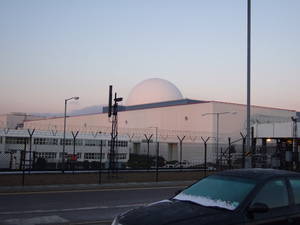 environments they're exposed, and that's a good thing all around.
environments they're exposed, and that's a good thing all around.
Ben - So what is the material that's actually being deposited?
Jonathan - Well that depends on what you've built your reactor out of. At the very beginning of the nuclear age, we used something called admiralty brass I believe. The type of copper brass alloy in them that obviously would've deposited copper oxide and all sorts of things like that.
In more recent years, we've moved from using that into using stainless steel which has been an excellent material all around and is still used in many plants and it's still used in conventional plants as well.
But in more recent years, the most commonly used materials have been the nickel based alloys which are extremely good. They're very good at corrosion resistance, they have lifetimes well in excess of many of the other materials we've used for the past 40 or 50 years, and they are being increasingly found to be far superior to what we've used.
My research is into stainless steel based material. Mainly because many plants around the world still have stainless steel steam generators. Replacing them with the new ones is really expensive. These things are hundreds of millions of pounds each. So, if we can solve the problem and people don't have to replace the steam generator because of a failure, all the better.
Ben - Power plants that rely on other types of fuel, essentially work in the same way by heating a water to generate steam to turn a turbine. So do we see the same problems in gas-fired plants and in coal-fired power plants?
Jonathan - Not so much. The issue with conventional plants and by conventional plants, I mean oil and coal, and gas. They generally use something called supercritical water which means the water has been heated up above 374 degrees Celsius and it's at a very specific pressure, which I can't remember off the top of my head, but what it means is that the water is no longer either liquid, nor is it gas. It's actually in a completely new phase of its own! This new phase means that each unit of this water can carry a lot more heat than either steam or liquid water can carry on its own. So, as you increase the temperature which will burn in your fuel, and as you increase the temperature of your coolant, you're actually increasing the efficiency of the fuel you've burned. So you're getting more energy out of the same ton of coal or oil that you've burned. Nuclear power stations don't work in the same way precisely. They do work by heating up water but they don't work in that supercritical region because there is still a question of what will radiation do to water when it's heated up and when it's in the supercritical regime.
Ben - So it is really a nuclear bespoke problem that you're looking at but what do you think is leading to this deposition being in those particular places where obviously, it's going to disrupt the flow, probably as much as it could do anywhere?
Jonathan - Well, there are many problems that it could be, but I've been charged with looking at a single specific one which is a problem called the streaming current. The streaming current comes from a corroded surface being exposed to flowing water that contains corroded particles. Now, the particles will sit very close to the wall and as we flow water very quickly across the surface, these particles that are loosely adhered to the wall will be forced downstream. As they're forced, they are flowing across the surface and they're generating something of a current. If you change the flow regime, that current is imbalanced. And in order to satisfy physics and the law of charge conservation, something has to happen in order for these particles and this charge to be balanced. So normally, the particles will find themselves pulled back towards the surface and quite tightly adhered, because they'll be re-oxidised into another state. Now at this point, you find that you have quite hard deposition around this point. Now, where we normally see this is when you change the flow regime from being a large flow and into a small flow.
 Ben - Do we have, in the works, any better ways to solve it rather than just cracking it open, and cleaning them off?
Ben - Do we have, in the works, any better ways to solve it rather than just cracking it open, and cleaning them off?
Jonathan - No. Unfortunately, the only way to clean these things is to get in there and manually do it. Not necessarily on your hands and knees with a pipe cleaner, there are obviously methods to do it, but people have to be involved in cleaning the thing. There's very few sections around. You can't simply clean the pipes by putting some chemicals through it and shoving some bleach through the steam generator. That isn't going to work.
Ben - And if you confirm that it is this, this induced current that attracts the particles in there, can we then use that to maybe aid, future reactor design in order to reduce this problem?
Jonathan - Yes, the reactor design itself is not necessarily at fault but it will need to be changed, should this prove to be a really consequential problem. Reactor design over the course of the last 50 years has changed in order to redesign out a problem that they see and water chemistry has been changed numerous times because of simple little things that we think, we can change that by changing the pH or just running it at a different temperature. This is just another one of those problems. Once this has been proven, there is probably more than likely a way to design the steam generator or to design any small flow restriction, in a way that it will no longer be affected by this kind of thing.
Ben - Jonathan Morrison from the school of chemical engineering at the University of Birmingham.

18:06 - Messages from Mercury
Messages from Mercury
The MESSENGER spacecraft completed one Earth year of orbiting Mercury this month, and two papers published in the journal Science highlight some of the surprising scientific results from our solar system's innermost planet.
MESSENGER launched in 2004, and after a few successful flybys went into orbit around Mercury in March 2011. As well as taking images, it has been measuring the magnetic field, taking spectral analysis of the surface and atmosphere, and mapping the terrain, and has made some unexpected discoveries about the planet's surface and core.
 Using the results from laser altimetry to measure topography, it becomes obvious that Mercury's northern hemisphere has a lower dynamic range of elevations, or simply is less mountainous than Mars or the Moon. That's not to say Mercury has had an inactive life - there's plenty of evidence of meteorite bombardment and volcanism, and also that large scale changes have occurred since the last heavy bombardment, and even since the volcanic plains were laid down. Some impact craters have even tilted and distorted. This suggests that volcanic or tectonic activity must have been an as yet poorly understood part of Mercury's evolution.
Using the results from laser altimetry to measure topography, it becomes obvious that Mercury's northern hemisphere has a lower dynamic range of elevations, or simply is less mountainous than Mars or the Moon. That's not to say Mercury has had an inactive life - there's plenty of evidence of meteorite bombardment and volcanism, and also that large scale changes have occurred since the last heavy bombardment, and even since the volcanic plains were laid down. Some impact craters have even tilted and distorted. This suggests that volcanic or tectonic activity must have been an as yet poorly understood part of Mercury's evolution.
Some of the unusual surface features could be accounted for by Mercury's strange core. It takes up 85% of the planet's radius - much larger that we would predict from our understanding of Earth, where the core only accounts for 50%. It contains a vast amount of iron, which generates it's distinctive magnetic field. It also has an unusual structure; while Earth has a solid inner core surrounded by a liquid outer, it seems that Mercury has an extra layer of complication: A solid iron sulphide outer core, surrounding a liquid layer that in turn engulfs a solid inner core.
This core structure is unique among the planets we've been able to observe so far, but fits well with observations of Mercury's magnetic field, and helps to explain the strange chemistry of it's surface - we know that the crust contains far more sulphur than could otherwise be predicted. However, this structure would also restrict convection in the mantle, so is likely to stand in the way of a simple explanation for the surface features.
Mercury may still have some surprises for us - other reports hint at the existence of liquid water, for example - and due to it's success, MESSENGER's programme has been extended to probe even further.
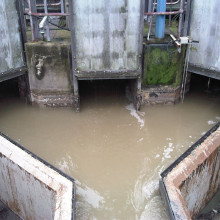
21:52 - Drugs in sewage
Drugs in sewage
Drug use in populations, both legal and illegal, is important to know about for health and law and order reasons. Whilst it is relatively easy to keep tabs on the amount of legal drug use by asking pharmacies and other resellers, the purveyors of illegal drugs are unsurprisingly reticent with this sort of information. It is possible to study the users with questionaires, but they are not always accurate,
Drugs are not all destroyed by the body, and many are excreted, and so end up in the sewers, so one obvious place to look is there. The problem is that many illegal drugs are the same molecule as another legal counterpart, or can be created in the body from a legal molecule so it is hard to tell the difference.
Barbara Kasprzyk-Hordern and David Baker at the University of Huddersfield have used the fact that although both versions are often the same molecule parts of the molecules can be mirror images of one another, forming enantiomers. The ratio of these is often different in the legal and illegal versions.
They studied waste water from a variety of treatment works using liquid chromatography machines to seperate out different molecules, and their enantiomers and mass spectrometry to give a better idea what the molecule is.
They found various different drugs in the waste water including amphetamine, methamphetimine, MDMA or ecstasy, and ephidrine. By studying the percentage of the different enantiomers they could show how much of each was illegal useage.
The technique obviously needs a lot of calibration, as they do not yet know how the different molecules behave in sewage systems, but it could be an important tool in understanding just what is being used out there.
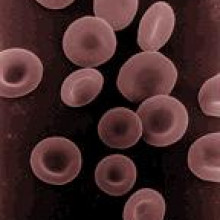
25:18 - Blood Tests to Predict Heart Attacks
Blood Tests to Predict Heart Attacks
with Dr Eric Topol, Scripps Translational Science Institute, California
Researchers in the Scripps Translational Science Institute in California have developed a blood test that may be capable of predicting an imminent heart attack. Publishing in Science Translational Medicine, Eric Topol and colleagues built on early work that shows populations of unusual endothelial cells in blood samples taken from heart attack patients. These cells seem to come from the linings of arteries. So to find out why this was so interesting, Chris Smith spoke to Dr. Topol.....
Eric - Well, we have a very big unmet need and that is today, we can't diagnose heart attacks that are incubating. It's very easy to diagnose a heart attack where there's already been damage to the heart muscle. So there's enzymes in the blood and there's a cardiogram that shows that, but the limiting factor is that we can't tell when the artery has cracked before the blood clot has formed. It's the blood clot that causes the stoppage of blood flow to the heart muscle, so we want to know when that crack is occurring which is a precursor to a heart attack.
Chris - So how did you approach that problem?
Eric - We know that when someone has a heart attack, we have a narrowed area of a blood vessel which has an atheromatous deposit in it and for some reason, this atheromatous deposit ruptures, or cracks open, and this forms a blood clot which then blocks the vessel.
Chris - So with that in mind, how did you approach say, well is there a way to try and pre-empt when this might be about to happen and who's at risk?
Eric - Yes, so back in 1999, there was the first paper ever that showed that these cells that were presumably coming from the artery lining could be found in the bloodstream before a heart attack. And so, that was a very provocative paper that sat dormant for well over 12 years. We didn't really have until more recently the ability to unequivocally identify these cells as truly coming from the artery, and also to zoom in on them and to do such things as sequencing and elaborate studies to understand what these cells are all about.
 Chris - So what did you actually do? You have a group of patients who have a heart attack, you have another group of patients who are equivalent to the first group that haven't had a heart attack and you compare the cells in the blood of both?
Chris - So what did you actually do? You have a group of patients who have a heart attack, you have another group of patients who are equivalent to the first group that haven't had a heart attack and you compare the cells in the blood of both?
Eric - Right, so normally, there's very few of these cells, if any, are in a healthy person and the cells are very elliptical, with one nucleus, they're very consistent. Whereas in the heart attack individuals from their early minutes of their blood had nothing to do with the heart attack per se, these are cells that clearly have been present for some days prior to that. But what was so unique about these cells is they were giant, they were very distorted, and in clusters. And this is the first time that that's been demonstrated.
Chris - So let's piece this back together then. You get these blood samples from people who have had a heart attack and it looks like these cells were probably in circulation prior to the time they had the heart attack. There could therefore be a warning sign that something is about to happen. How do you think they got from the diseased artery into the test tube that you tested?
Eric - Well it's pretty straightforward. You know, there's a crack that's emerging in this inflamed segment of an artery from the surface of the heart and as the crack is growing, before the blood clot forms, these cells are just getting shed from a spot right into the blood and of course, once they're in the blood, just getting a blood tube sample is a window into that process.
Chris - It's reassuring that you found only a small number of these cells in  healthy people. But of course, I wonder whether you included in that control group, people who might have other risk factors but aren't having a heart attack because - is there going to be a gray area where you'll have people who have artery disease but they're not at imminent risk of a heart attack but your test looking for these cells might say they are?
healthy people. But of course, I wonder whether you included in that control group, people who might have other risk factors but aren't having a heart attack because - is there going to be a gray area where you'll have people who have artery disease but they're not at imminent risk of a heart attack but your test looking for these cells might say they are?
Eric - Well we haven't seen any gray area yet. You know, we've extended this in many different patients and we even took the healthy people and we kept having them come back which had never been done before to see how stable the finding is of their absence, or relative absence, of these cells. So, we tried to drill down on that quite a bit, Chris.
Chris - The big question must be, well how far in advance can we predict a forthcoming event and therefore intervene meaningfully in these people?
Eric - Well you know, this was a segue to a much more simple, quick and hopefully quite inexpensive test. The work that we did was too laborious, trying to isolate all these cells, but now that we've done genomics of these cells, and have a much easier signal to work with, we will take that to the emergency room setting to validate a practical test.
Chris - Wouldn't it be more meaningful to take a large group of individuals who are at risk and then just bring them back into the clinic on a weekly basis and get blood from them, and then marry up those blood samples with the ones who do then over time going to have a heart attack?
Eric - Yeah, that wouldn't work too well because you'd have to do that in thousands of people every week to get the few that are going to have a heart attack. It's not so easy to find people who are about to have a heart attack using that route. But if you go to the emergency room setting where people - for example in the US, there's 3 million people coming in with chest pain or tightness, or pressure, thinking that you might have a heart attack each year - and out of those, so many have no damage to their heart muscle but in fact are the exact kind of people that we're trying to identify because they are having this precursor event. So that's a much better way than just taking people who are perfectly stable with no symptoms, having to come back to a clinic every week. But, you're bringing up another point. This is a one off test. In order to have the blood under surveillance all the time, in high risk individuals like you were outlining, that will require a sensor embedded in the blood which we're working on as well that would communicate to one's Smartphone to give a ring tone that a heart attack is incubated.
Chris - I'm also getting at the point that we're coming up with all of these coronary risk profiles and we're saying to people, "You have a 10 % risk or you have a 15 % risk" and we're using this to inform what drugs we put people on. If we've got an even more acute measure, these are the individuals who are not just at risk but these are really elaborating a heart attack that's in evolution then they could actually be stratified for even more intense treatment and a heart attack could be prevented in those individuals.
Eric - You've nailed it. The point is, is that once you know the heart attack underlying process is ongoing, it's a heart attack waiting to happen, then the main thing is to prevent the blood clot. If we prevent the blood clot, then the chance of preventing the event is exceptionally high and naturally it becomes a new goal.
Ben - Eric Topol from the Scripps Translational Institute in La Jolla, California.

32:33 - Fighting Baldness and Healing Wounds through Hibernation
Fighting Baldness and Healing Wounds through Hibernation
with George Cotsarelis, University of Pennsylvania; Jason Ur, Harvard University; Grant Lipman, Stanford University Medical School; David Garshelis, University of Minnesota
The Proteins Preventing Male Pattern Baldness
A new drug target to prevent male pattern baldness has been identified by scientists at the University of Pennsylvania.
scientists at the University of Pennsylvania.
By profiling the genes and resulting proteins in scalp tissue from males suffering from the condition, George Cotsarelis found that in samples of balding tissue, there were increased levels of the protein prostaglandin D2.
It's thought the protein inhibits hair growth in follicles by acting on a receptor known as GPR44 and targeting this receptor therapeutically could treat or
prevent male pattern baldness in the future.
George - If you look at the current treatments for male pattern baldness, they're all based on serendipitous findings but what we've done is we directly studied the disorder and looked for abnormalities in the actual scalp and we showed that this protein inhibits hair growth in both human hair follicles as well as mouse hair follicles. We then identified the receptor that this protein works through and there are compounds that target this receptor already. So we think that using these compounds would lead to a new treatment for male pattern baldness.
---
Spotting Archaeological Sites from Space
Satellite images have been used to identify over 9000 sites of early human settlement in North-Eastern Syria.
Researchers from Harvard University used computer algorithms to search the images for clues of human habitation such as soil discolouration caused by long-term human activity and elevated mounds of land created by populations building on top of previous remains.
Jason Ur led
the discovery...
Jason - This is significant because these places were not known before. We can now take this data set and we can ask really basic questions about the origins of settlement, the relationship of villages and cities to their environment. We can also take what we found and we can use this to protect these places in the face of new development threats which grow every year. What's particularly exciting about the method that we've developed is if I were to do this on the ground, it would take me a very long time. With this method, I can map out the possible places of settlement very quickly.
---
A Simpler drug for Altitude Sickness
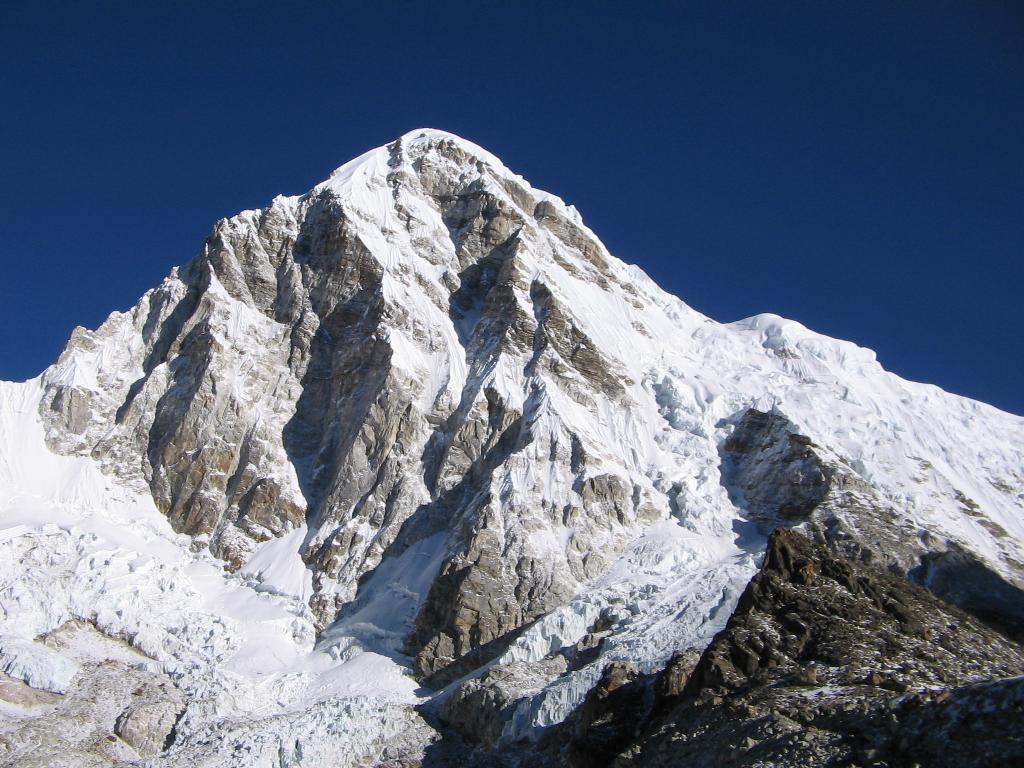 Ibuprofen can
Ibuprofen can
reduce your chances of suffering from altitude sickness, which can cause symptoms such as headaches and nausea and can be fatal.
Taking 86 volunteers up White mountain in California to altitudes of 12500 feet and dosing them with either ibuprofen or placebo , Grant Lipman from the Stanford University School of Medicine found that people taking the drug were 3 times less likely to show symptoms...
Grant - Up until now, the prevalent medications are prescription drugs like acetazolamide or dexamethasone, limited by prescription-only availability and each with side effects. So, we're really excited about the generalisability of these findings that can affect the tourists and the weekend warriors, and people who want to enjoy the mountains and don't want to be feeling awful for the first day or two days of their vacation.
---
Healing with Hibernation
Black bears can heal wounds during hibernation to emerge injury-free in the spring.
By inserting small cuts into the skin of 14 black bears before hibernation and monitoring the state of these wounds as they hibernate throughout the winter, David Garshelis from the University of Minnesota found that despite having a slower metabolism during this time, the bears replaced layers of skin at the injured sites and grew new hair with minimal scarring and no signs of infection.
David - Even though their skin temperature and their core temperature is greatly reduced and their blood circulation is greatly reduced, they are able to heal this wound and have very little scarring on the wounds and they even get follicle growth. All this is very different from other hibernators and obviously, very different from humans. We're hoping that if we can find out the mechanism that is used in bears to heal these wounds, maybe we can somehow apply it to help humans heal wounds, particularly when people don't have good circulation.
And that work is published this week in the
Journal of Integrative Zoology.

36:55 - Noctilucent Clouds - Planet Earth Online
Noctilucent Clouds - Planet Earth Online
with David Hooper, MST Radar Facility
David - Noctilucent clouds are one of the rarest clouds that you are likely to see in the atmosphere, but at the same time it is something anybody - if they know when to go and look - can see. They form up at about 85 kilometres which is very high up in the atmosphere. Most of the clouds you see day to day will only be in the lowest few kilometres and certainly not above 15 kilometres. So they're really much, much higher. The other thing is they only form during the midsummer months of June and July and what we would say is a middle and upper latitude, so anywhere in the British Isles you have the chance to see these and you need to wait until the sun has set and has gone a bit below the horizon, so dawn and dusk during the midsummer months that's the time to go and see noctilucent clouds.
Sue - How can you tell a noctilucent cloud from say a cumulous cloud that everybody is familiar with - the fluffy one?
David - You need to wait for the sun to set below the horizon. 85 kilometres - it takes a lot longer for the sun to set than it does on the ground so you need  to wait maybe half an hour an hour after sunset. The word noctilucent itself means night shining. These clouds look sort of silvery, they're often very thin filament structures and you will see them glowing whereas the lower clouds, the typical clouds, you will see will tend to be quite grey by then if there are any.
to wait maybe half an hour an hour after sunset. The word noctilucent itself means night shining. These clouds look sort of silvery, they're often very thin filament structures and you will see them glowing whereas the lower clouds, the typical clouds, you will see will tend to be quite grey by then if there are any.
Sue - You've got a picture for me here on your computer screen and you are right they are white and shiny and wispy and threadlike.
David - They do tend to be very characteristic and all these small filaments are quite important. That said it sometimes is possible to confuse a regular cloud with a noctilucent cloud but if you've got nominally clear skies you will know if you do see a good example.
Sue - Why study these particular clouds?
David - These clouds are interesting because they are in part of the atmosphere where it's quite hard to study anyway. So, clouds even low down, by watching what clouds are doing it can tell you a bit about the atmosphere, but the other reason they are particularly of interest to scientists is nobody ever saw them or reports having seen them before, I think, it's 1883 which was the time of the eruption of Krakatau and within a year or so of that people started to report sightings of these and there are indications that maybe they're becoming more common and there is a bit of a suspicion that that could represent some indication of a change in climate up in the high part of the atmosphere.
Sue - So you've got these ice clouds at the edge of space, how do you study them?
David - We study not exactly the cloud but we study a related phenomenon that we call mesosphere summer echoes and we see this with the radar facility we operate in Aberystwyth.
Sue - And mesosphere being this area above the earth where you specifically find these clouds.
David - Yes, the mesosphere actually is quite a broad region; it stretches in altitude between about 50 and 90 kilometres. What we're looking at really here is the very top of the mesosphere, really right on the edge of the space environment.
Sue - So when you're using this radar array are the echoes that the radars are detecting, are they echoes from the cloud itself, these noctilucent clouds.
David - It is not exactly the cloud but we know that the cloud determines the echo. What we are really seeing in this part of the atmosphere with the radar are electrons and this is from high energy radiation from the sun splitting apart some of the molecules. What happens is these electrons get attached to the cloud, to the ice crystals, and what we are then seeing is the structure which is driven by the electrons stuck on the ice cloud.
Sue - And my looking at the relationship between these echoes and the clouds themselves what are you hoping to determine?
David - Well, to some extent we're just trying to understand what we see with the radar. We run the radar most of the time to study the lower part of the atmosphere, what most people would call the weather and we also see these echoes whether we like it or not, so my job really is to try and understand what these additional things we're seeing. Other people are more focused on studying the mesosphere and the regions of the atmospsparse above that and so, obviously, any information we can give them in this very data sparse region of the atmosphere is obviously going to be useful.
Sue - So it's pretty exciting times then to study these noctilucent clouds.
David - Well it certainly is for me because for something that we've been observing for nearly seven years and never really quite understood what we're looking at to suddenly see that there is something we can understand, that is exciting.
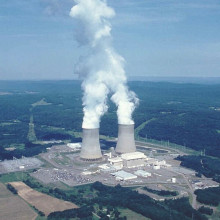
42:06 - Do we need Nuclear Power?
Do we need Nuclear Power?
with Ron Bailey, Parliamentary consultant of the association of the conservation of energy, Professor Martin Freer, Director of Birmingham Centre for Nuclear Education and Research.
We have a challenge to supply our growing demand for electricity whilst reducing our carbon emissions. But is nuclear power the only way to go? The answer is far from clear-cut. So to discuss some of the issues, Birmingham University organised a debate held in London this week. We sent Meera Senthilingam along to meet Ron Bailey, Parliamentary consultant of the association of the conservation of energy. But first, she spoke to Professor Martin Freer, Director of Birmingham Centre for Nuclear Education and Research......
Martin - To my mind, there are two reasons why we need nuclear power - the first is, to do with climate change and the second is energy independence. The climate change issue is that we need to reduce our CO2 emissions, greenhouse gas emissions, by 80 % compared to 1990 levels by 2050.
So, you need to work out how you arrive at 20 % on that sort of timescale and a good reference marker for that is the work of the committee on climate change. Now, what they've done is looked at the energy portfolio that we have now and potential energy portfolios for the future and they looked at a number of different options. Starting with the obvious one which is renewable sources, they tried to work out what is the maximum amount of energy that you could get, the maximum amount of power that you could get, from those renewable sources, and it comes to about 40 % of our energy budget on the timescale that we need.
In addition to that, you could have something like 20 % of gas, so things like wind turbines, they need backup energy supplies and that would come from gas generation. You need then another 40 % coming from nuclear power.
Meera - And is nuclear able to provide that 40%?
Martin - So at the moment, we have 15 % of energy generation through nuclear power. To get up to 40 % I think is a real challenge. The ability to build enough nuclear power stations, the number that we might need, will exceed capability at the moment to build reactors.
Meera - Ron, what are your thoughts on this need for nuclear power to meet this extra 40% of energy that we need in the future?
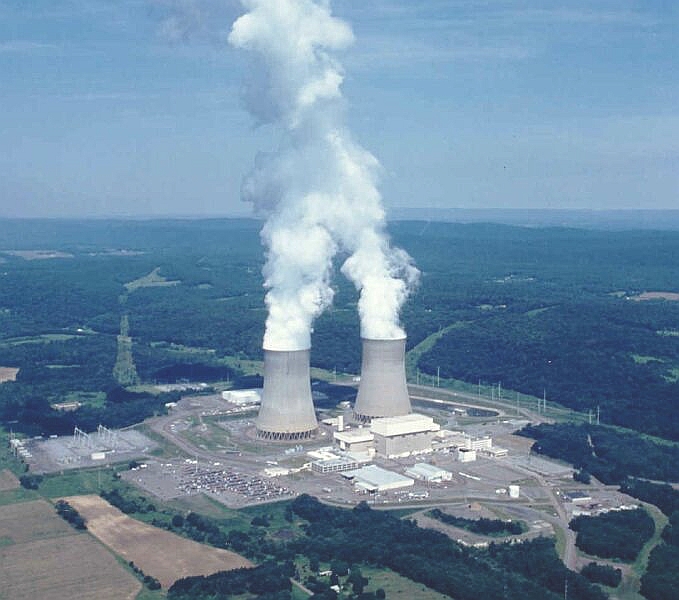 Ron - The government did a lot of modelling about how to get both the CO2 reductions that Martin refers to, to have 80 % by 2050, and to keep the lights on, and that modelling shows very conclusively that we don't need nuclear power to do it. There are at least 8 ways of doing it without nuclear power. That involves investment in - firstly, energy efficiency because the best solution is saving the energy you don't use in the first place and then renewables - wind, offshore wind, onshore wind, solar PV, biomass, and combined heat and power, and obviously, carbon capture and storage.
Ron - The government did a lot of modelling about how to get both the CO2 reductions that Martin refers to, to have 80 % by 2050, and to keep the lights on, and that modelling shows very conclusively that we don't need nuclear power to do it. There are at least 8 ways of doing it without nuclear power. That involves investment in - firstly, energy efficiency because the best solution is saving the energy you don't use in the first place and then renewables - wind, offshore wind, onshore wind, solar PV, biomass, and combined heat and power, and obviously, carbon capture and storage.
Meera - Martin?
Martin - I think the biggest issue whether one can understand energy savings, energy efficiencies, and as yet, I haven't seen substantial amount of research into the degree at which one can reduce from the current levels of energy consumption to the level at which one would need to reach in order to achieve the CO2 emission's targets.
Meera - What is the actual issue with energy today in terms of demand?
Martin - So if one looks back over time, so go back to the 1970s and look at how much demand has increased between 1970 and now, energy demand, electricity demand has gone up about 1 % per year. But if that linear trend continues then we are going to see over the next 40 years or so an increase of 40 % in our energy demand. At the moment, we cannot meet that in terms of the kind of capacity that we have, energy generation. One would need to make very dramatic energy savings just to offset that potential increase in demand.
Meera - Ron, for this increase in demand that's going to happen in the coming years, are these alternatives to nuclear plausible to actually meet such demands?
Ron - The government says that they're figures it both on robust analysis. So the answer is yes.
Meera - But what about, as well as becoming more efficient with our energy, the actual alternatives and other renewable sources of energy?
Ron - Yes, of course. It's absolutely right. We can't just say we have to generate and again, the government's evidence shows that these will provide enough heat and electricity to keep the lights on and to keep us warm in our homes.
Martin - One way of putting this into context is to take the evaluation done by David MacKay and he's looked at all the countries around the world to evaluate the amount of power per meter squared that you would need to generate. And for the UK, it's 1 watt per meter squared and then you look at the amount of power that you could generate from a wind turbine. It's about 2 to 3 watts per meter squared which means that to solve the UK's problems, you would need half to a third of the UK covered with wind turbines.
Meera - And how does nuclear compare to that?
Martin - Nuclear of course has a very high power density. You can get a gigawatt out of 10s of square meters so the power density is much, much higher.
Meera - Martin, just to focus in a little bit on nuclear power itself and some of the concerns regarding the safety of future reactors, the actual designs of these future reactors, and the question of disposing waste in these. Are these all being taken into account?
Martin - So you're right. Safety is very important and in fact, the nuclear industry has, surprisingly, a very good safety record. If you look at the types of power station which have been designed for the future - so EPR and AP1000 - they're completely different in their concept of safety. They have a lot of passive safety features. This is using natural processes like convection to take over if an accident should happen inside a reactor.
Meera - And Ron, what are your thoughts on this?
Ron - On the issue of safety, I mean, the nuclear industry has been claiming it's very safe for years and years, and years, and thankfully, there's some truth in that, but I can mention words like Fukushima, Three Mile Island and Chernobyl. So, you know, it's not as safe as it's claimed.
Martin - Okay, so to put it into some context, if one looked at Three Mile Island and looked at the number of people who actually lost their lives through that accident, well it wasn't any. And indeed if one looked at Fukushima as well, how many people died in the nuclear part of the event? Well, none. How many people died in the tsunami? Well, over 18,000. The worst nuclear incident, as Ron mentioned, was Chernobyl. Again, about 28 people died in that incident and subsequently, the latest United Nation report in 2011 showed that only about 15 people got cancer, thyroid cancer in the intervening year. So, it's rather crass but if one was to try and quantify how good that record is against other energy generators, then nuclear power is something like a hundred times more safer than gas and a thousand times more safe than coal.
Meera - To summarise, what should we be doing next? Martin...
Martin - I believe very strongly that nuclear power is part of the future. I think the government need to look carefully about the economic conditions, the political conditions to encourage companies. It's a big gamble for companies to invest in nuclear power. One may need to make sure that those conditions are right.
Meera - Ron...
Ron - The next step is to fully investigate the potential for energy affinity and energy saving which hasn't been done and as it's the cheapest, we should do that now. Then we should start to invest in long term renewable and low carbon solutions such as wind power, offshore wind, some onshore wind, biomass combined heat and power and carbon capture storage.
We can supply all our energy needs and reduce CO2 by those methods without nuclear power which will be more costly.
Ben - Ron Bailey from the Association to the Conservation of Energy and before him, Professor Martin Freer from the University of Birmingham. You can find the report Ron was talking about on the Department of Energy ad Climate change website to help you make up your own mind.
What is thorium and why is it playing a role in the nuclear debate?
Eric - Thorium is element 90. It's about 3 times more abundant than uranium. Thorium, if you put it inside a nuclear reactor, will absorb a neutron and turn it to uranium-233 and then that becomes a fuel. Ben - So, it could be a useful thing to put into a nuclear reactor if we can get it to absorb those neutrons, if we can get it to play a part. Would it be safer? Would it be more useful or are the by-products less harmful? Eric - I think we have to look at it from a resource standpoint since it's 3 times more abundant than uranium, it provides another energy input, so we have to provide a catalyst to turn that thorium into something that could be fissioned to break in half and that catalyst becomes a neutron. So from a safety standpoint, from a waste standpoint, I really don't see - you know, if you look at 10,000 feet, any real difference between the thorium or uranium cycle. Ben - So it's perhaps not the panacea that the internet seems to claim that it is? Eric - Well, I think if you had a chance to read Sir David King's SSEE Report towards a low carbon pathway, he talks about moving to a decarbonised society with more nuclear power and has discussions that there isn't enough uranium and so, that's where thorium can provide that extra element.
What makes newer nuclear plants safer?
We've learned to make designs that really take advantage of physics. It's probably misnamed by calling it passive safety, but I would call it better using and understanding the physics. We use gravity, natural convection, those sort of things to help cool the plant after it shuts down. So GE Hitachi's ESBWR has the ability to remove heat passively without any electricity, without any operator actions for well over 7 days. The PRISM reactor can do that for a very, very long time and if not, forever. So that's where reactor vendors like GE Hitachi have learned "what do we need to do to these designs to make them better and to make them safer?"
What is the half life of plutonium?
Eric - The half life of plutonium 239 is 2.4 x 10 4 years. The other isotopes of plutonium have a little bit shorter half life than that. Dave - So that means that if you're breaking plutonium down into something which has a half-life of only 300 years, that's definitely improving the radioactive danger and pollution problem. Eric - Yes. If you look at the repositories they grapple with, these long term elements, and I call them transuranic, those elements above uranium, where they have half lifes of hundreds of thousands of years, that makes it tough on a repository design. If you get down to where you have fission products which are on hundreds of years then your repository design can be, I think, simpler and a little bit different. Ben - And just to clear up a couple of the basics of things, half life essentially means that after that many years, you will have half as much of the original product. So it doesn't mean that it will only last twice that length because after that many years again, you have half again. Eric - Right, but just to be clear for your listeners, if I have 1 kg of plutonium, If I come back after 1 half life, I'll have Ã?,½ kg of plutonium and Ã?,½ kg of uranium because plutonium decays into uranium.
What is an isotope?
Dave - What defines the element is the number of protons it's got and also the number of electrons it has got outside so it defines the chemistry of that element. You can then change the number of neutrons inside that atom and that will change its nuclear properties but won't change its chemical properties and these things with different nuclear properties are called isotopes of an element. Ben - So it's still the same element but different numbers of neutrons so that the 238 is the number of neutrons. Dave - The 238 is the total mass, the total number of protons and neutrons and so, 239 will have an extra neutron.
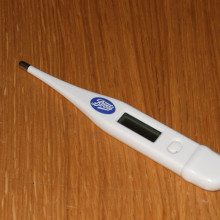
54:46 - Is there an absolute maximum temperature?
Is there an absolute maximum temperature?
We posed this question to Sam Gregson, High Energy Particle Physicist at the University of Cambridge...
Sam - The temperature of a system is simply related to the amount of energy in that system. Because the system can't have a negative energy, there is only so much heat you can remove from it and so a limit to how cold you can get. This is called absolute zero. We've got very close to it. Scientists in Finland have cooled rhodium atoms to a 10th of a billionth of a degree above absolute zero.
On the other hand, an absolute maximum temperature would require there to be a limit to the amount of energy you can give to a particle. As far as we know, there is no such limit. Although the speed of light is the universal speed limit, the reason you can't get there is that this would require an infinite amount of energy. So this speed limit does not limit the amount of energy and therefore, the temperature of an individual particle.
The most energetic particle ever observed was a cosmic ray over Utah, travelling at 99.999999999985% of the speed of light. It was probably a single proton with about 50 joules of energy. This is equivalent to about 5 trillion trillion degrees Celsius, and there is no evidence that this is the hottest you could get to.
As far as we know, you are just limited by the amounts of energy you can give to a particle. So you could say that the absolute maximum temperature is a temperature equivalent to all the energy in the universe, concentrated onto one particle. But that limits more accounting than basic physics.
Hannah - Thanks to Sam Gregson from Cambridge University and CERN. So temperature is related to thermal energy, and Einstein's theory of relativity means that although a particle has a universal speed limit, it doesn't have an energy limit. If you took all of the energy in the Universe and put it into one particle, you'd essentially run out of energy before you run out of capacity for energy, which is why we have no absolute maximum temperature...
- Previous Blood Tests to Predict Heart Attacks
- Next Ten Years of Diamond









Comments
Add a comment